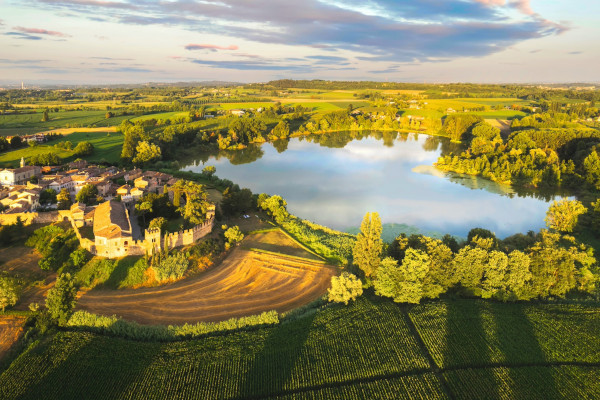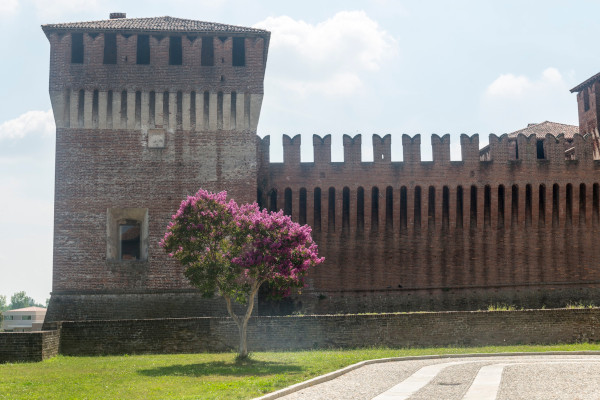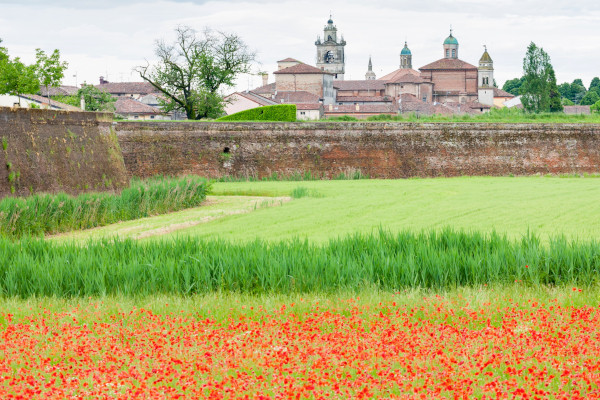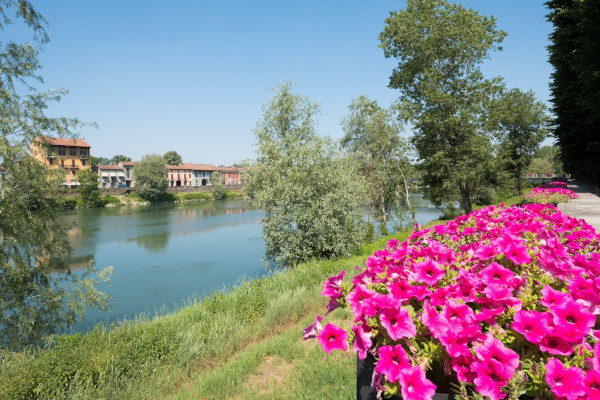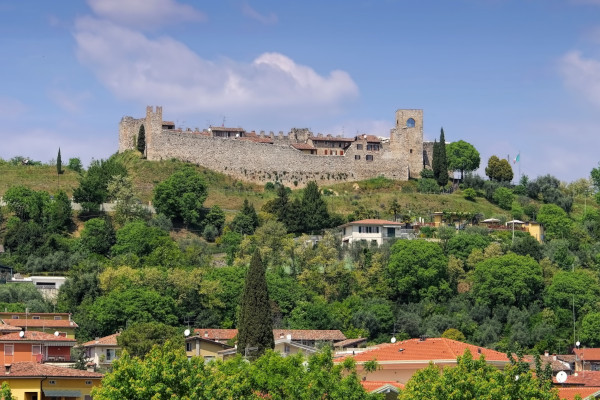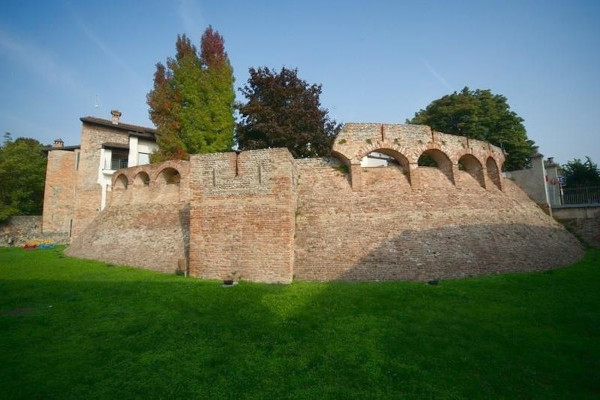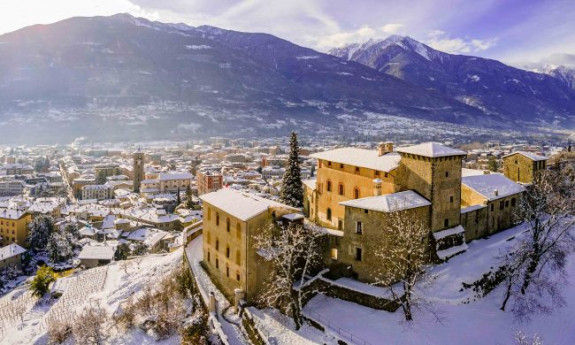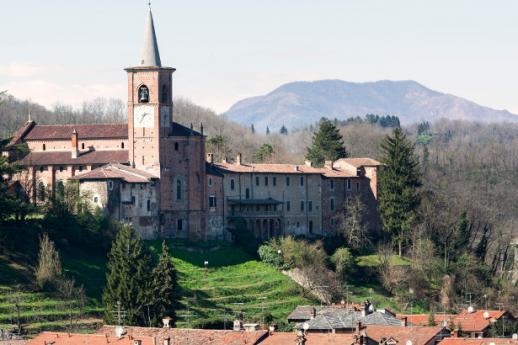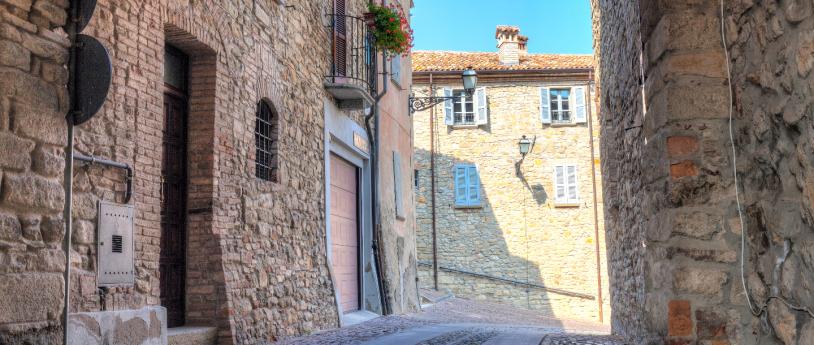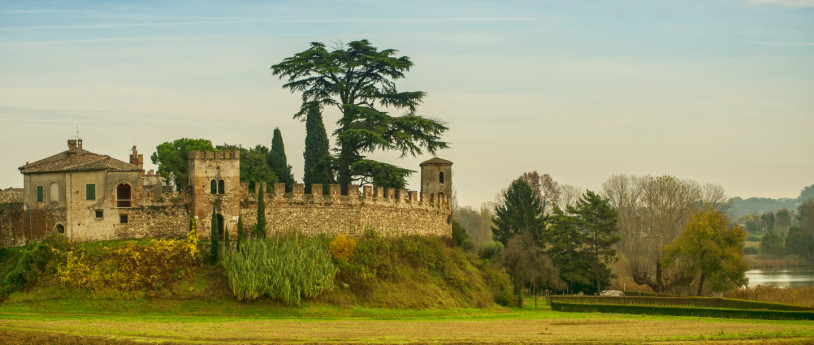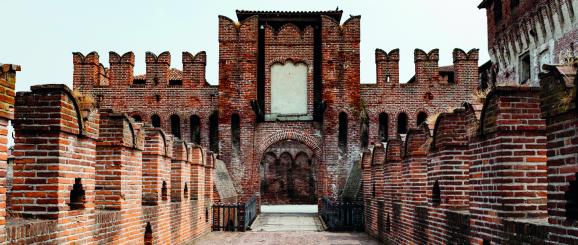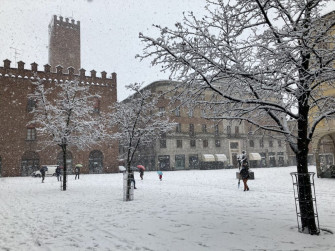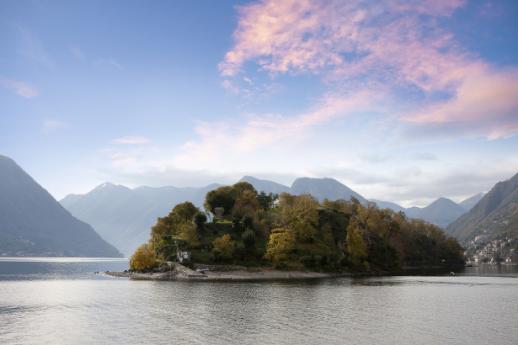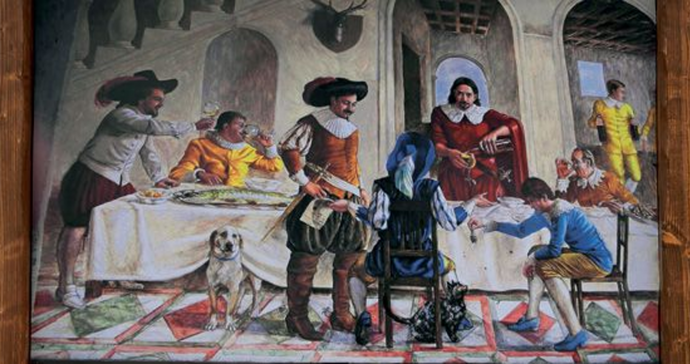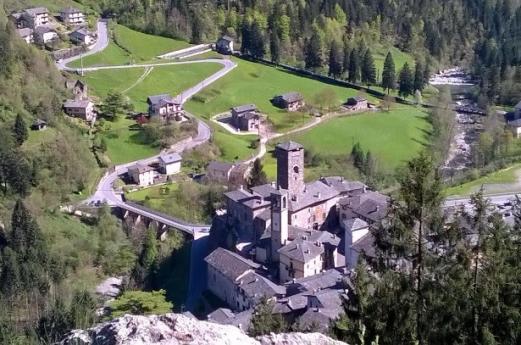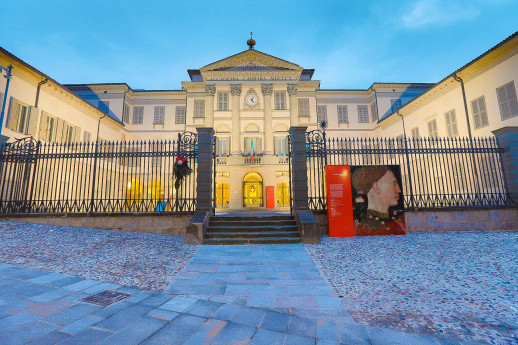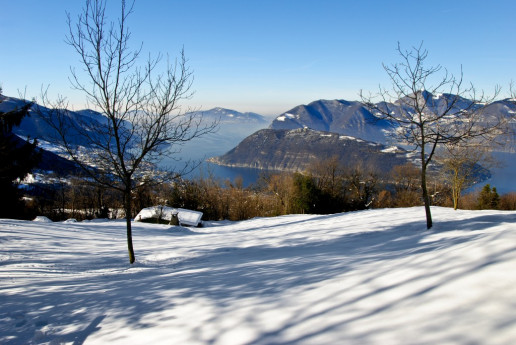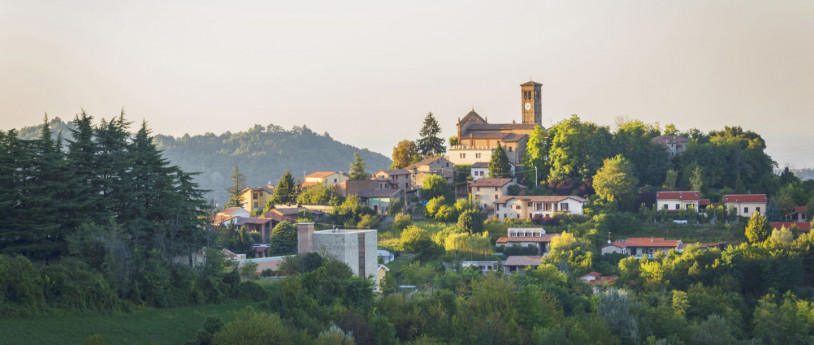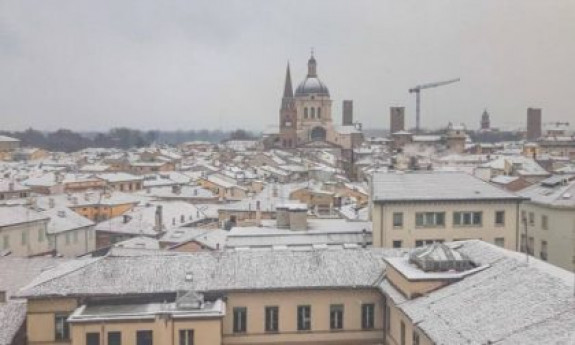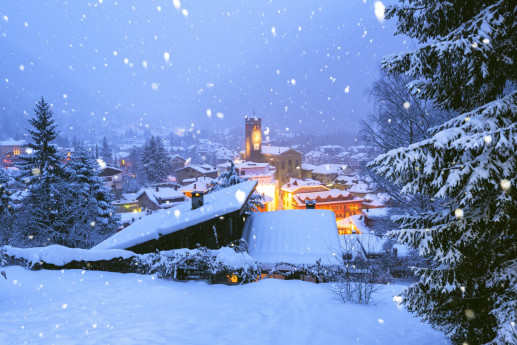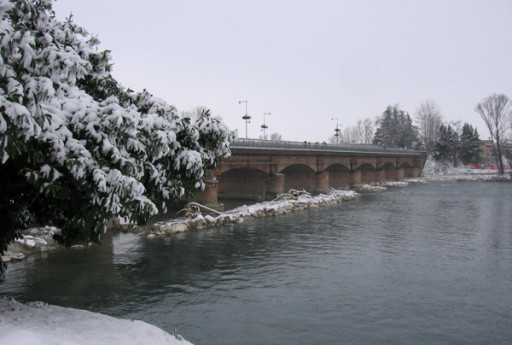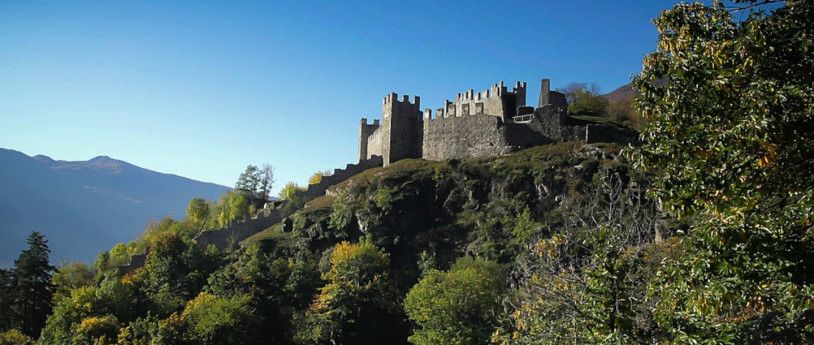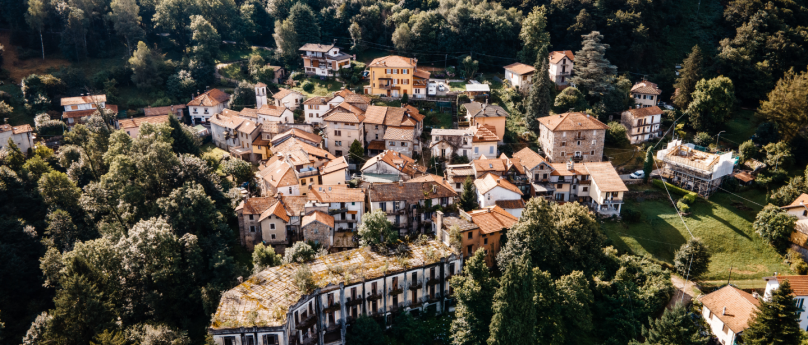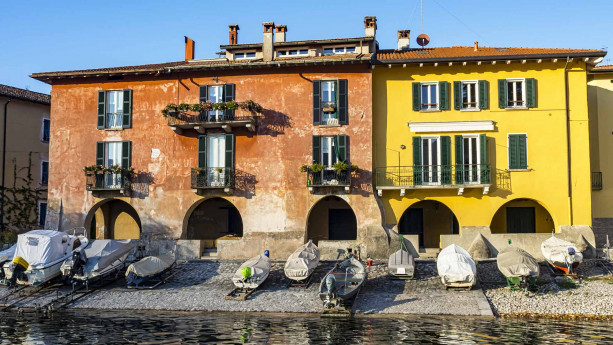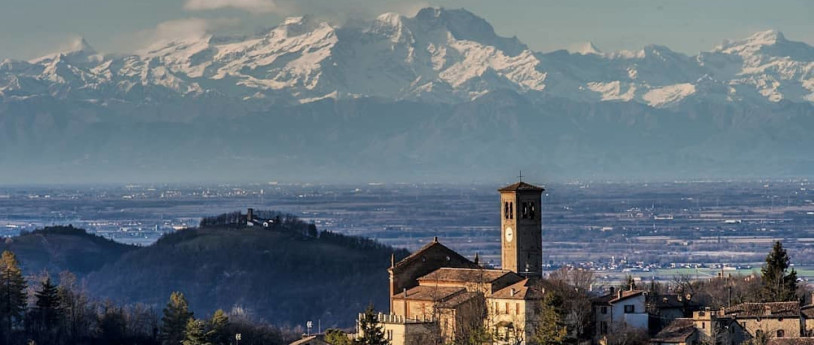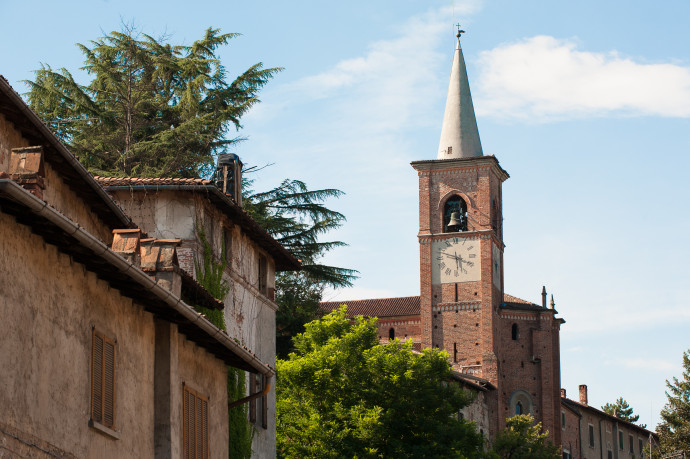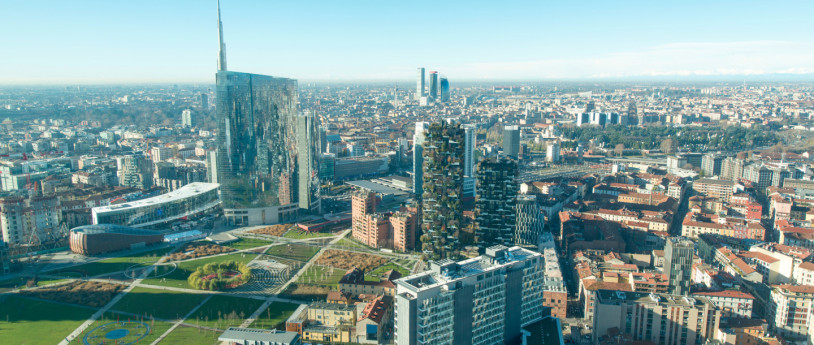- Villages
- Art & Culture
- Active & Green
Six fortified villages in Lombardy
Explore six stunning fortified towns in Lombardy. Perfect destinations for a spring day out
The varied scenery, ranging from the rugged Alps to the peaceful lakes makes Lombardy the ideal setting for discovering some of the most fascinating fortified villages, off the beaten tourist track.
These locations reflect Italy’s vast heritage, encapsulated in towns and villages that offer a perfect combination of culture, history and natural beauty. In this article, we are going to tell you about six of them, each with its own unique story and characteristics. They all share old boundary walls and forts, which nowadays are points of architectural and historic interest, rather than symbols of defence.
Choose your favourite and you will be sure to love the suspended atmosphere of these oases of peace, where time seems to stand still. The risk is that after the first, you will want to see them all.
Castellaro Lagusello (MN)
The name already reflects something of the history. There is a “castellaro” and also a “lagusello”, a lake with a special shape that has often led visitors to see Castellaro Lagusello as a perfect village for lovers. This little jewel, nestling in the moraine hills around Mantua, stands out for its 12th century castle and for the charming heart-shaped pond in the centre of the village. A trip here is a lovely gift to give yourself: a fairy tale for the day, in one of “Italy’s most beautiful villages”. Visiting in spring means seeing it in all its different colours, when the surrounding fields are filled with flowers, which the village celebrates at its annual Flower Festival.
Castellaro Lagusello is easy to get to by car, and parking is available at the entrance to the village. Entry is through a gate with drawbridge, set in the village walls. The walls are surprisingly well preserved and enclose cobbled streets, stone houses, and artisan workshops that seem to be suspended in time. It is possible to get onto the walls to admire breathtaking views of the lake and the surrounding countryside, or even to go on a guided visit of the castle, in search of secrets and stories from the past. Don’t miss the opportunity to try some of the typical local dishes from the restaurants in the centre, where you can savour traditional recipes in a unique setting. There is also an interesting museum of archaeology, with local finds dating back to the Bronze Age. For nature lovers, the moraine hills offer numerous routes for excursions, on foot or by bike, through the 138 hectares of nature reserve around the village, managed by Parco del Mincio. As well as visiting the castle and museum, you should not miss the chance to take a stroll around the lake - particularly stunning at sunset.
Soncino (CR)
This town, in the province of Cremona, is home to the best preserved castle in Lombardy, the thousand-year-old Rocca Sforzesca. The incredible state of preservation gives visitors the idea that time really has stood still: the imposing walls, the moat and the corner towers are truly a stunning sight. Walking around the interior, it is possible to imagine its beginnings, when it was built against the Magyar invasion, and also to combat the expansionism of Venice. Coming here offers you a window onto the past, which is ideal for visitors seeking history and culture.
Soncino is easily reached by car and has plenty of parking outside the walls. A stroll through the streets will take you past palazzos decorated with terracotta friezes, mills that are still intact, and an ancient route along the Venetian walls that surround the centre. It is possible to walk along the walls to admire the surrounding countryside and the city from above, with its curious, imposing yellow building. This is the Silk Museum, dedicated to the different areas of silk making and working. Another place to visit is the Printers’ House, where the first complete Jewish Bible in the world was printed in 1488. For nature lovers, just a stone's throw from the walls: the mule tracks along the River Oglio are perfect for walks or cycle rides, especially in the mild spring weather.
Sabbioneta (MN)
Did you know that the “ideal city” is located between Mantua and Parma? This was the aim when Sabbioneta was designed in the latter part of the 16th century, recently becoming a UNESCO World Heritage Site, declared of "outstanding universal value”. We are at the very heart of the Renaissance: the art, architecture and urban layout are the realisation of the very concept of the Ideal City in the period. Every element reflects the theories of perspective and proportion that are typical of ancient classical cities, emphasising the harmony and elegance of Sabbioneta.
Sabbioneta is easy to get to by car and has various areas for parking. The gates to the city open in the perfectly preserved walls, set in a structure that forms a six-point star. Inside, the urban design follows Renaissance principles, with wide streets set out in straight line, and imposing monuments set in strategic positions, occupying very small spaces. These include the Teatro all'Antica, one of the oldest indoor theatres in the world, the Galleria degli Antichi, which once housed the art collection of the Gonzaga family, and the Ducal Palace, which often hosts interesting temporary exhibitions. After the artistic treasures, you can also discover the natural ones, taking the UNESCO cycle path between Sabbioneta and Mantua, or walking through Parco Oglio Sud with its vineyards and orchards, deciduous woods and wide expanses of cultivated fields.
Pizzighettone (CR)
On the banks of the River Adda stands a town with ancient roots, surrounded by two kilometres of fortified walls, linked by more than 90 “casematte” - the rooms inside them. This is Pizzighettone, with roots that go back, between the countryside and the river, to ancient Celtic people and the Romans who, in the 12th century, made it a castrum, a defence camp. The town walls arrived towards the end of the 14th century with the Viscontis and today, they are one of the main attractions and among the most imposing, best preserved town walls in Lombardy. This fortified town is an absolute treasure for history enthusiasts and offers a full panorama of the fortification techniques used over the past centuries.
Pizzighettone is easy to reach by car with plenty of parking near the centre. The ancient city gates and the watchtowers are vivid testimonies of a fascinating bellicose past just waiting to be discovered on an interesting guided tour. The stand-out feature here comes from the casematte, large rooms used to accommodate soldiers as well as for storage of goods and food stocks, built as communicating structures for a total of approximately 800 metres indoors. Don’t miss the Civic Museum, which contains artefacts and historic finds relating to the city and the region, or even the Museum of Art and Trades, and the Prison Museum. Even outside the walls there is a spectacular view: 300 hectares of Tenuta del Boscone, also known as Parco di Pizzighettone, a natural reserve that is very popular with local people, and where you can walk along the trails, stop off for a spot of birdwatching, ride along the many cycle paths, or organise a picnic outside.
Padenghe sul Garda (BS)
An expanse of low houses with red roofs dominated by a large castle. This is Padenghe sul Garda, built on a hill on the lower shore of the Lake from which it takes its name. An area that was settled in Neolithic times and which has had a castle since the year 1000. This is the oldest castle in Valtenesi, built for defence purposes as well as going on to become an important centre for jurisdiction. Today, the structure is practically intact, with three towers over twenty metres high, offering breathtaking views over Lake Garda, and the peninsula of Sirmione.
Padenghe sul Garda is easy to get to by car as well as using public transport. The small village has its original structure with humble, quiet streets and stone houses, cobblestone streets, arched doors and windows, and cornices in rough brick. Also worth visiting is Villa Barbieri, now home to the town hall, and you can also take a stroll down to the little port with its beautiful, long pebble beach, where you will come across a few friendly bars. There is also no shortage of available sporting activities, from swimming, to hiking and mountain biking, as well as a golf club with several courses. Try some of the local wine, grown in the vineyards around the town, perhaps to accompany one of the dishes made using fish, freshly caught in the lake.
Cologno al Serio (BG)
The Bergamo valley is home to a town that seems to besuspended in the past. Although it dates back over two thousand years, the layout has remained untouched since the originally mediaeval one. It can be seen in the streets, the urban layout, and above all in the intact walls with moat, and Castel Liteggio, on the outskirts of the town. This hidden gem, on the right bank of the River Serio, is a perfect example of a fortified town, with a rich history and excellently preserved mediaeval structures.
Cologno al Serio is easy to reach by car from Milan and Bergamo, and has plenty of parking spaces close to the centre of town.. The centre itself is dominated by its imposing castle, built during the Middle Ages to defend the area against invasion. It is still possible to see parts of the crenellated walls and themoat, details that made it an extremely powerful fortified building. A visit to the castle and walls helps to better understand the defence strategies of the past and to admire the art of fortification in the Middle Ages. Strolling through the streets, you will have the opportunity to discover some points of interests, like Porta Rocca, the old entrance to the town, and the Farming Museum, as well as little artisan workshops and coffee shops, where you can enjoy local products. It is also possible to get here following an interesting route, the cycle toursim itinerary “Le terre di Bartolomeo”, one of the 14 itineraries of the Cycle Tourism Park in the Middle Po Valley.
